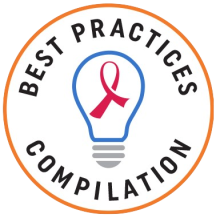The Utah Department of Health and Human Services (DHHS) collaborated with Ryan White HIV/AIDS Program (RWHAP) Part B-funded medical case managers to improve care and outcomes for clients following Franklin Covey’s 4 Disciplines of Execution: 1) focus on the wildly important goal (WIG); 2) act on the lead measures; 3) keep a compelling scoreboard; and 4) create a cadence of accountability (COA). Through intensive case management, regular monitoring, and feedback sessions, the state's RWHAP Part B program's overall viral suppression rate increased from 88.9% in 2020 to 90.4% by December 2021.
UT
Organizations may have more good ideas than resources to implement them. In addition, even strategies developed from good ideas often fail. Franklin Covey’s 4 Disciplines of Execution aim to help organizations create a “culture of high performance” by focusing on key measures, activities that directly influence those measures, and systems of monitoring and accountability.1 The Utah DHHS chose this approach to increase the viral suppression rate among the state's RWHAP Part B clients, a key HIV care outcome measure.
“Focus on less so the team can achieve more. Psychologically it is important to have a single measure of success.”
The Utah DHHS recognized that too many goals and initiatives may overwhelm staff and strain already limited resources. Therefore, staff “minimized to maximize” and focused on a single “lag measure" or WIG. Lag measures directly demonstrate whether a goal has been achieved. Viral suppression was selected as the WIG based on existing data and department priorities. Using the WIG format, the Utah DHHS chose the following goal: increase viral suppression for RWHAP Part B clients from a 2020 baseline of 88.9% to 91% by December 2021.
"Lead measures" are directly impacted by the team and should predict the success of the lag measure or WIG. The Utah DHHS identified lead measures, and developed and implemented strategies to influence those measures. The lead measure chosen was the number of clients who were missing viral load lab values, who were not adherent to ART, or who were not virally suppressed. These clients were assigned to a medical case manager who notified the medical care provider and together with the interdisciplinary team identified treatment adherence barriers and implemented interventions to address those barriers.
Goals, activities, and outcomes were tracked on a “scoreboard,” developed in Trello. This virtual collaboration tool allowed staff to see their progress, hold each other accountable, and share successes.
“Teams will perform better when they know the score.”
Case managers and facilitators from the Utah DHHS formed a team and conducted a 30-minute meeting twice a month to discuss the WIG and successes and challenges in client engagement. Each team member reported on the commitments previously identified and if they met those commitments. The commitments could include contacting a client to schedule an appointment or providing the client with a social service, such as transportation. Case managers then identified one or two new commitments and described how they would impact the lead measures and the WIG.
After this year-long project (2020–2021), the state's RWHAP Part B program's overall viral suppression rate increased by 1.5%.
| Category | Information |
|---|---|
| Evaluation data | HIV surveillance data on viral load merged to the state’s RWHAP Part B data. |
| Measures |
Percentage of RWHAP Part B clients in the 12-month measurement period who are virally suppressed.
|
| Results | The RWHAP's Part B viral suppression rate increased from 88.9% in 2020 to 90.4% by December 2021. |
Source: Minimize to Maximize: A Cadence of Accountability the Key to Optimizing Service Delivery. National Ryan White Conference on HIV Care and Treatment 2022 presentation.
- Definition of WIG and lead measures. The team defined the lag measure (WIG), which reflected the long-term goal of increasing client viral suppression. They identified lead measures that would directly impact the lag measure and would also be influenced by team activities (e.g., clients who were not virally suppressed or adherent to ART).
- Staff training. The team used online resources and trainings to learn about Franklin Covey’s 4 Disciplines of Execution.
- Scoreboard. The simple and compelling scoreboard was built in Trello to clearly capture and display information on project activities and lead and lag measures. The Utah DHHS reviewed multiple program management tools and selected Trello because it was user-friendly and free to the Part B-funded medical case managers.
- Staff roles. The project required DHHS staff to lead project planning and coordination. The case management supervisor and two medical case managers met twice a month with DHHS to discuss progress. In addition, Utah DHHS leadership and provider agencies met quarterly in the quality committee meeting to review performance measures and discuss quality improvement opportunities.
- This project was funded through RWHAP Part B and pharmaceutical rebate dollars.
- While this specific project has ended, the Utah DHHS continues to use the approach for other quality improvement efforts.
- It is essential to include the right people in the process. A core team of engaged people involved in the planning keeps activities moving. Others can join to provide input as needed.
- Case managers may provide excellent services to clients, but may lack training and experience on quality improvement activities. Franklin Covey’s 4 Disciplines of Execution provides training resources and a measurement and accountability framework to support them in these efforts.
- To keep regular meetings productive, case managers focused on a key question, "What are the one or two most important things I can do these next two weeks that will have the biggest impact on the scoreboard?” They also discussed whether they could meet commitments identified in the previous meeting to troubleshoot client engagement challenges and hold themselves accountable.

